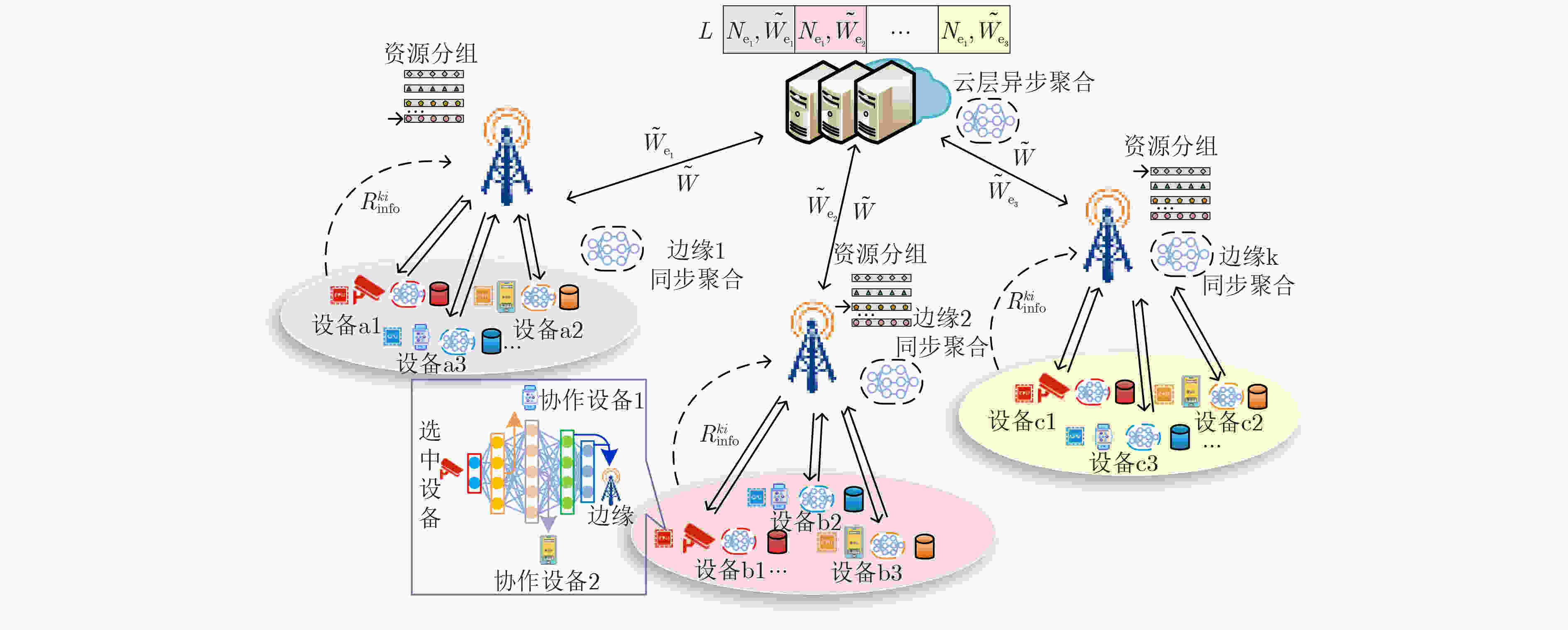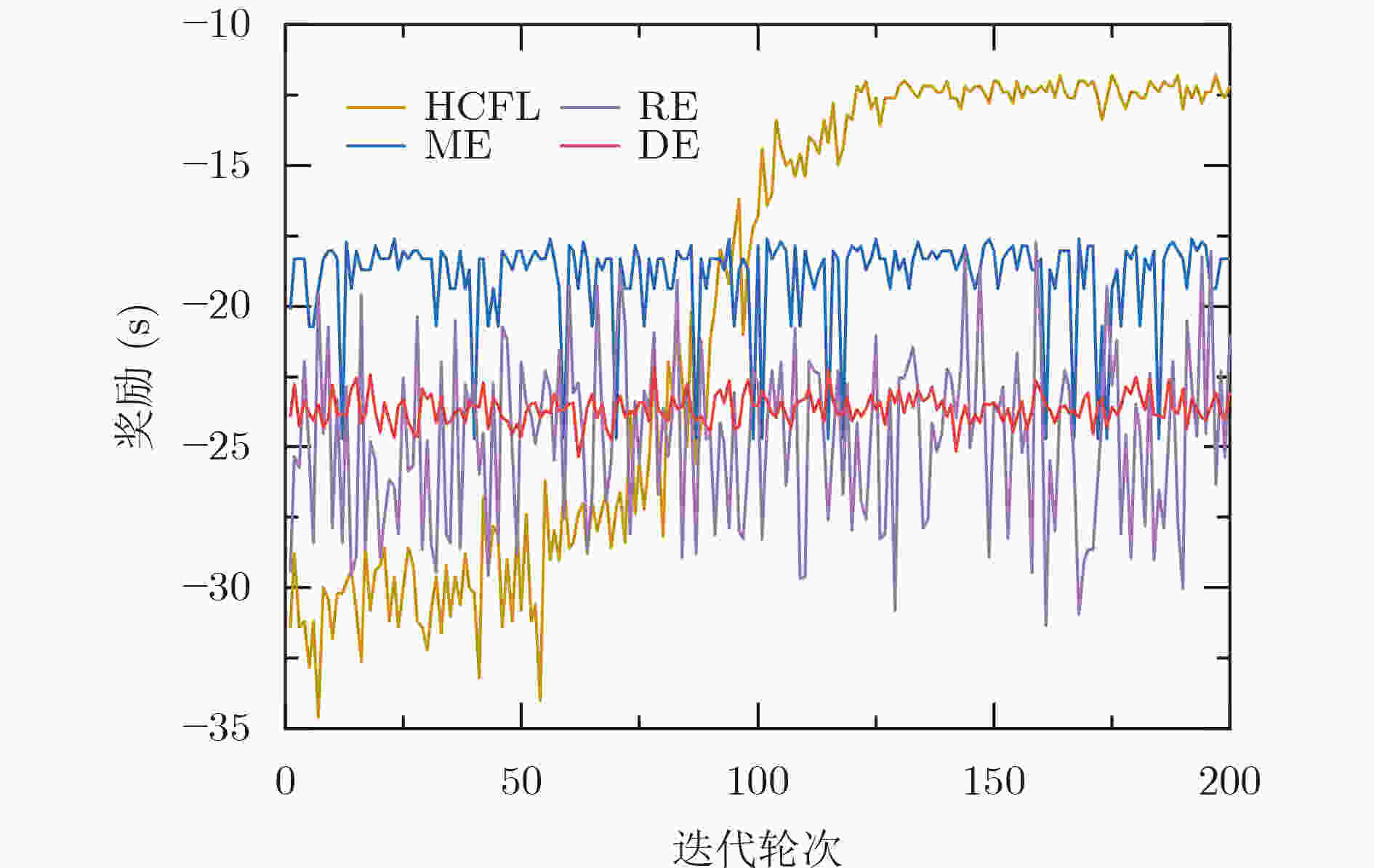| [1] |
ZHANG Jing and TAO Dacheng. Empowering things with intelligence: a survey of the progress, challenges, and opportunities in artificial intelligence of things[J]. IEEE Internet of Things Journal, 2021, 8(10): 7789–7817. doi: 10.1109/JIOT.2020.3039359
|
| [2] |
WANG Xiaofei, HAN Yiwen, LEUNG V C M, et al. Convergence of edge computing and deep learning: A comprehensive survey[J]. IEEE Communications Surveys & Tutorials, 2020, 22(2): 869–904. doi: 10.1109/COMST.2020.2970550
|
| [3] |
YANG Qiang, LIU Yang, CHEN Tianjian, et al. Federated machine learning: Concept and applications[J]. ACM Transactions on Intelligent Systems and Technology, 2019, 10(2): 12. doi: 10.1145/3298981
|
| [4] |
MCMAHAN B, MOORE E, RAMAGE D, et al. Communication-efficient learning of deep networks from decentralized data[C]. Proceedings of the 20th International Conference on Artificial Intelligence and Statistics, Fort Lauderdale, USA, 2017: 1273–1282.
|
| [5] |
LIU Lumin, ZHANG Jun, SONG S H, et al. Client-edge-cloud hierarchical federated learning[C]. Proceedings of 2020 IEEE International Conference on Communications (ICC), Dublin, Ireland, 2020: 1–6.
|
| [6] |
CHAI Zheng, ALI A, ZAWAD S, et al. TiFL: A tier-based federated learning system[C]. Proceedings of the 29th International Symposium on High-Performance Parallel and Distributed Computing, Stockholm, Sweden, 2020: 125–136.
|
| [7] |
ZAWAD S, ALI A, CHEN Pinyu, et al. Curse or redemption? How data heterogeneity affects the robustness of federated learning[C]. Proceedings of the 35th AAAI Conference on Artificial Intelligence, Vancouver, Canada, 2021: 10807–10814.
|
| [8] |
DUAN Moming, LIU Duo, CHEN Xianzhang, et al. Self-balancing federated learning with global imbalanced data in mobile systems[J]. IEEE Transactions on Parallel and Distributed Systems, 2021, 32(1): 59–71. doi: 10.1109/TPDS.2020.3009406
|
| [9] |
NISHIO T and YONETANI R. Client selection for federated learning with heterogeneous resources in mobile edge[C]. Proceedings of 2019 IEEE International Conference on Communications (ICC), Shanghai, China, 2019: 1–7.
|
| [10] |
PARK J, HAN D J, CHOI M, et al. Sageflow: Robust federated learning against both stragglers and adversaries[C/OL]. Proceedings of the 35th Conference on Neural Information Processing Systems, 2021: 840–851.
|
| [11] |
DINH C T, TRAN N H, NGUYEN M N H, et al. Federated learning over wireless networks: Convergence analysis and resource allocation[J]. IEEE/ACM Transactions on Networking, 2021, 29(1): 398–409. doi: 10.1109/TNET.2020.3035770
|
| [12] |
ABAD M S H, OZFATURA E, GUNDUZ D, et al. Hierarchical federated learning ACROSS heterogeneous cellular networks[C]. Proceedings of 2020 IEEE International Conference on Acoustics, Speech and Signal Processing (ICASSP), Barcelona, Spain, 2020: 8866–8870.
|
| [13] |
ZHAO Yue, LI Meng, LAI Liangzhen, et al. Federated learning with non-IID data[EB/OL]. https://doi.org/10.48550/arXiv.1806.00582, 2018.
|
| [14] |
IMTEAJ A, THAKKER U, WANG Shiqiang, et al. A survey on federated learning for resource-constrained IoT devices[J]. IEEE Internet of Things Journal, 2022, 9(1): 1–24. doi: 10.1109/JIOT.2021.3095077
|
| [15] |
LI Ang, SUN Jingwei, LI Pengcheng, et al. Hermes: An efficient federated learning framework for heterogeneous mobile clients[C]. Proceedings of the 27th Annual International Conference on Mobile Computing and Networking, New Orleans Louisiana, USA, 2021: 420–437.
|
| [16] |
WU Di, ULLAH R, HARVEY P, et al. FedAdapt: Adaptive offloading for IoT devices in federated learning[J]. IEEE Internet of Things Journal, 2022, 9(21): 20889–20901. doi: 10.1109/JIOT.2022.3176469
|
| [17] |
HUANG Yakun, QIAO Xiuquan, DUSTDAR S, et al. Toward decentralized and collaborative deep learning inference for intelligent IoT devices[J]. IEEE Network, 2022, 36(1): 59–68. doi: 10.1109/MNET.011.2000639
|
| [18] |
ZENG Liekang, CHEN Xu, ZHOU Zhi, et al. CoEdge: Cooperative DNN inference with adaptive workload partitioning over heterogeneous edge devices[J]. IEEE/ACM Transactions on Networking, 2021, 29(2): 595–608. doi: 10.1109/TNET.2020.3042320
|
| [19] |
SCHULMAN J, WOLSKI F, DHARIWAL P, et al. Proximal policy optimization algorithms[J]. arXiv: 1707.06347, 2017.
|
| [20] |
HE Chaoyang, LI Songze, SO J, et al. FedML: A research library and benchmark for federated machine learning[J]. arXiv: 2007.13518, 2020.
|
| [21] |
LECUN Y, BOTTOU L, BENGIO Y, et al. Gradient-based learning applied to document recognition[J]. Proceedings of the IEEE, 1998, 86(11): 2278–2324. doi: 10.1109/5.726791
|
| [22] |
XIAO Han, RASUL K, and VOLLGRAF R. Fashion-MNIST: A novel image dataset for benchmarking machine learning algorithms[EB/OL]. https://doi.org/10.48550/arXiv.1708.07747, 2017.
|
| [23] |
YOSHIDA N, NISHIO T, MORIKURA M, et al. Hybrid-FL for wireless networks: Cooperative learning mechanism using non-IID data[C]. Proceedings of 2020 IEEE International Conference on Communications (ICC), Dublin, Ireland, 2020: 1–7.
|






 下载:
下载:








 下载:
下载:
